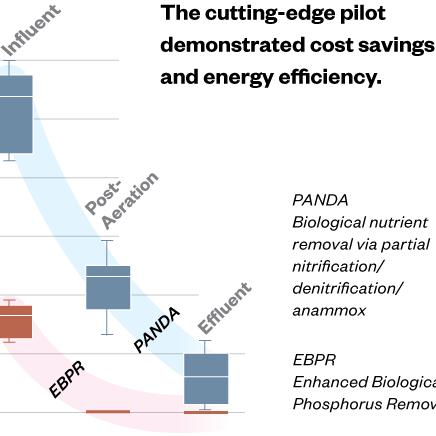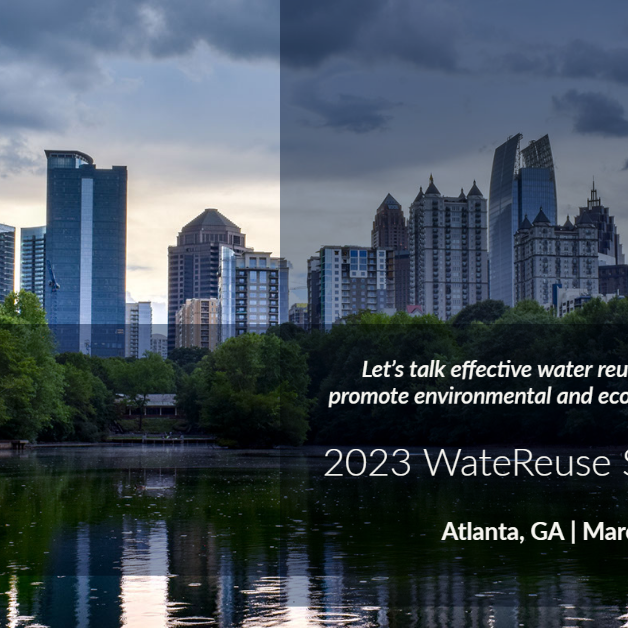Optimization Strategies at Four BNR Facilities to Reduce Nutrients and Operating Costs
David Wankmuller, Katya Bilyk, Eric Polli, Damon Forney, John Dodson, Charlie Cocker, Jeff Mahagan
Last Modified Mar 14, 2023
The purpose of this presentation is to provide quantitative examples of nutrient optimization strategies at different municipalities to improve nutrient removal efficiency, reduce operating costs, and improving sustainability. Three of the four facilities discussed consistently achieve annual average TN concentrations below 2.5 mg/L. A range of optimization strategies will be discussed from new infrastructure to zero capital improvements. Stringent effluent limits were the main driver for the optimization strategies at all the facilities. Several years of data from each facility were reviewed as part of ongoing projects and to follow-up on recent operational changes or improvements.
Related Topics:
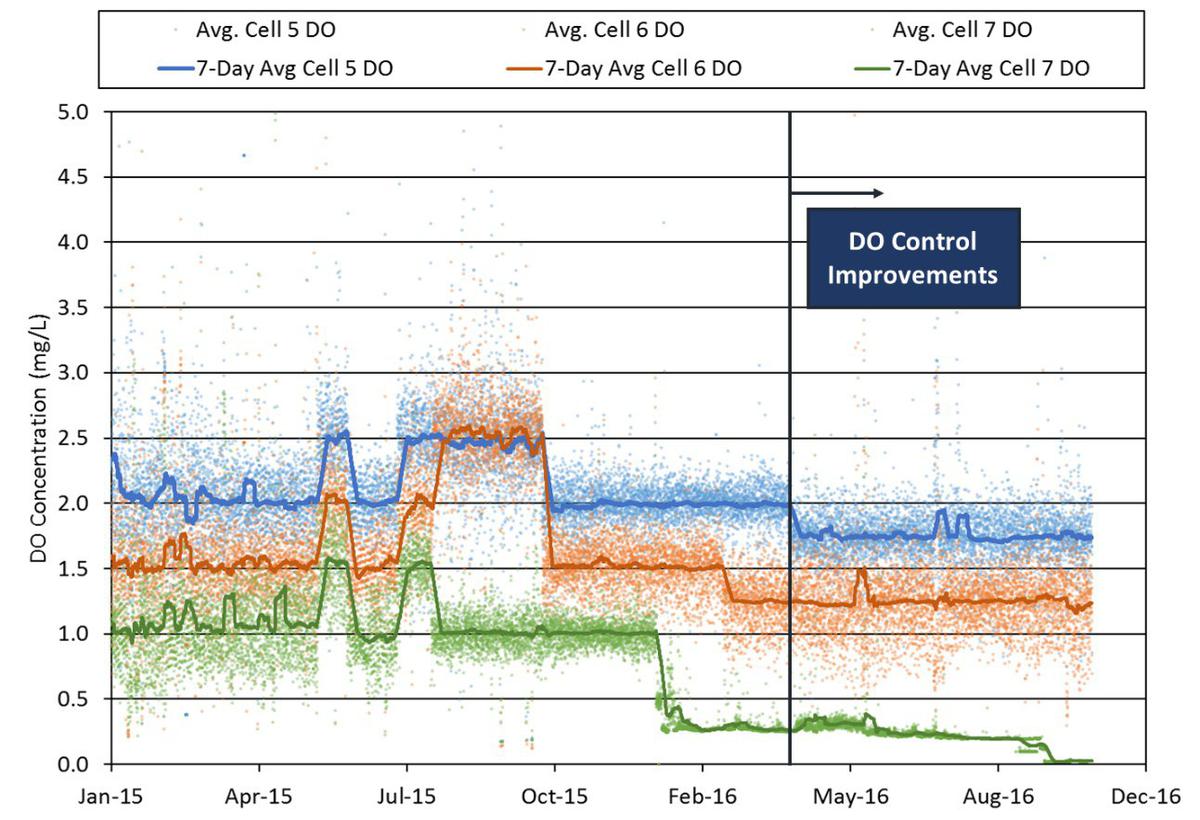
Western Wake Regional Water Reclamation Facility (WWRWRF)
The WWRWRF is an 18 MGD facility that utilizes biological reactor basins (BRBs) for nitrification, denitrification, and phosphorus removal. The BRBs can be operated in a 6-stage BNR process that includes a mixed liquor (ML) fermentation zone at the head of the basins.
The WWRWRF case study will focus on process improvements including optimizing dissolved oxygen (DO) control and the MLSS (ML) fermentation zone to improve TN and total phosphorus (TP) removal and in so doing eliminated their need for glycerin and ferric sulfate. After the improvements were implemented the facility averaged an effluent TN under 2.5 mg/L and TP under 0.25 mg/L without chemical addition.

South Durham Water Reclamation Facility (SDWRF)
The SDWRF is a 20 MGD plant treating about 10 MGD with a mass equivalent TN limit of 5.5 mg/L and 0.23 mg/L TP at 20 mgd. The TN limit will soon be reduced to 3 mg/L as part of the Jordan Lake Rules. The facility has a 5-stage BNR process that averaged effluent TN concentrations of 8 to 9 mg/L prior to the facility improvements.
The SDWRF case study will document the results from installing sidestream nitrogen removal and modifications to the biological nutrient removal (BNR) tanks including baffle wall enhancements and optimizing DO to reduce TN. After the improvements were implemented the facility reduced their effluent TN concentration by approximately 2 mg/L.
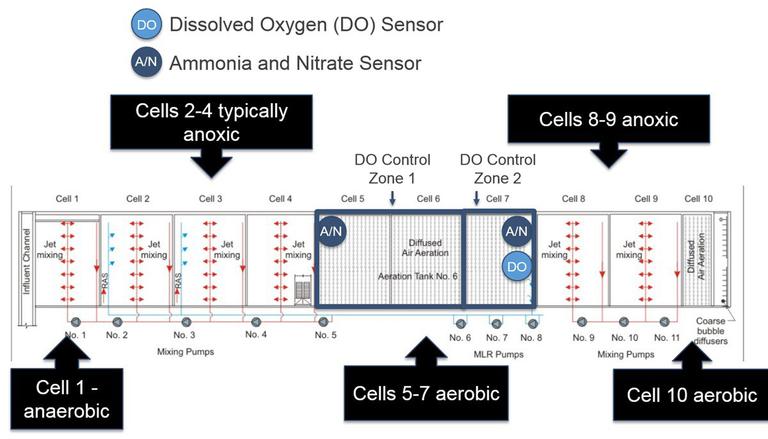
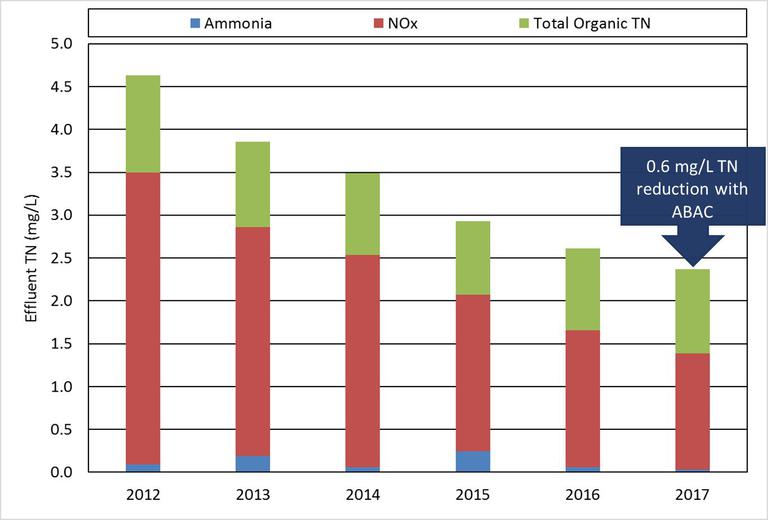
North Durham Water Reclamation Facility (NDWRF)
The NDWRF is a 20 MGD plant subject to the Falls Lake Rules, which impose an annual mass limit equivalent to an effluent TN limit of 1.6 mg/L and effluent TP limit of 0.11 mg/L at design flows. The facility was achieving an effluent TN of 2.9 mg/L prior to facility improvements.
The NDWRF case study will examine the operation of ammonia-based aeration control (ABAC) to improve nitrification reliability and denitrification efficiency. The average effluent ammonia concentration was reduced from 0.25 mg/L without ABAC to 0.03 mg/L with ABAC. Denitrification efficiency also improved as a result of ABAC, the mass of nitrate removed in the second anoxic zone per pound of glycerin added increased from 2.1 to 3.0 lb nitrate/lb glycerin. Overall, the NDWRF reduced its effluent TN by 0.6 mg/L from 2.9 to 2.3 mg/L solely with ABAC. Influent and primary effluent characteristics were similar on average for the periods before and after ABAC that are being compared.
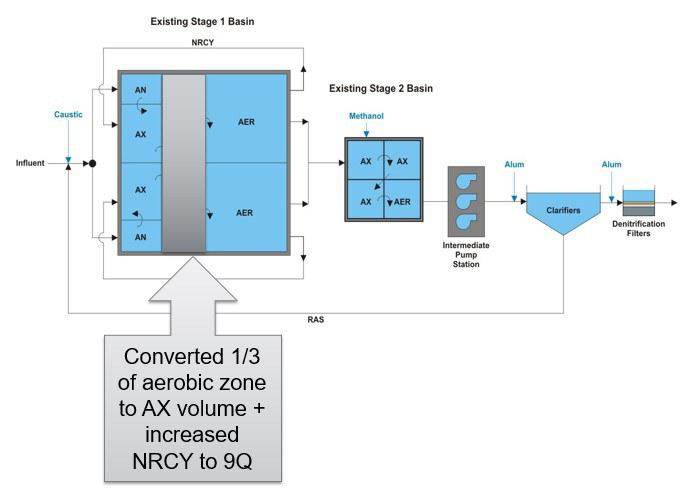
Hillsborough Wastewater Treatment Plant (HWWTP)
The HWWTP is a 3 MGD plant, which upgraded its nutrient removal process in 2013 to a 5-stage BNR process with denitrification filters to meet the Falls Lake Rules. The goal of the process improvements were to achieve an effluent TN below 3.0 mg/L.
The HWWTP case study will center on enlarging the first anoxic zone of the BNR process and increasing the nitrified recycle (NRCY) to improve TN removal and in so doing eliminated their need for methanol. With these two improvements, the HWWTP was able to stop adding methanol and consistently met effluent TN concentrations below 2.0 mg/L. The facility is also consistently working to optimize BPR and has averaged an effluent TP of 0.30 mg/L for the past year compared to the 2013 (pre-optimization) average effluent TP of 1.1 mg/L.
Three out of the four plants reliably achieve total nitrogen (TN) limits at or below 2.5 mg/L. Furthermore, the WWRWRF and HWWTP have been optimized to achieve the limits without supplemental carbon.
Four BNR facilities were able to optimize their process to achieve reduced effluent TN and/or TP concentrations and reduce operating costs. The presentation will detail the BNR optimization implemented at each facility including but not limited to: ML fermentation, ABAC, sidestream treatment, longer first anoxic zones with higher NRCY, and optimized DO control.



